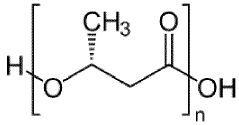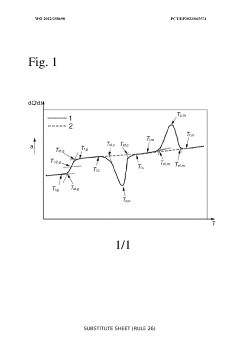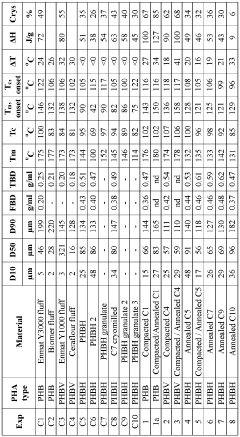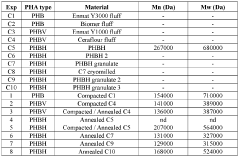Biodegradable Plastics Join Forces with Renewable Packaging Options
Biodegradable Plastics Evolution and Objectives
Biodegradable plastics have emerged as a promising solution to address the global plastic pollution crisis. The evolution of these materials can be traced back to the 1980s when the first commercially viable biodegradable plastics were introduced. Since then, significant advancements have been made in developing more efficient and environmentally friendly alternatives to conventional plastics.
The primary objective of biodegradable plastics research is to create materials that can decompose naturally in the environment without leaving harmful residues. This goal aligns with the growing global emphasis on sustainability and circular economy principles. As the demand for eco-friendly packaging solutions continues to rise, the integration of biodegradable plastics with renewable packaging options has become a key focus area for researchers and industry professionals alike.
One of the main drivers behind the evolution of biodegradable plastics is the increasing awareness of the environmental impact of traditional petroleum-based plastics. This has led to a surge in research and development efforts to create bio-based alternatives derived from renewable resources such as corn starch, sugarcane, and cellulose. These materials not only offer biodegradability but also contribute to reducing carbon footprint and dependence on fossil fuels.
The evolution of biodegradable plastics has been marked by several technological breakthroughs. Early biodegradable plastics faced challenges such as limited durability and high production costs. However, recent advancements in polymer science and biotechnology have resulted in the development of more robust and cost-effective biodegradable materials. These innovations have expanded the potential applications of biodegradable plastics across various industries, including packaging, agriculture, and consumer goods.
A significant milestone in the evolution of biodegradable plastics has been the development of compostable materials that can break down in industrial composting facilities. This has opened up new possibilities for waste management and has encouraged the adoption of biodegradable plastics in regions with well-established composting infrastructure. The ongoing research aims to further improve the composting efficiency and expand the range of environments in which these materials can biodegrade.
Looking ahead, the objectives for biodegradable plastics research are multifaceted. Scientists and engineers are working towards enhancing the mechanical properties of these materials to match or exceed those of conventional plastics. Additionally, efforts are being made to develop biodegradable plastics that can degrade in various environments, including marine ecosystems, to address the issue of plastic pollution in oceans.
Another key objective is to optimize the production processes of biodegradable plastics to make them more economically viable and scalable. This includes exploring new feedstock sources, improving fermentation techniques, and developing more efficient manufacturing methods. The ultimate goal is to create biodegradable plastics that are not only environmentally friendly but also competitive in terms of cost and performance with traditional plastics.
Sustainable Packaging Market Analysis
The sustainable packaging market has experienced significant growth in recent years, driven by increasing environmental awareness and regulatory pressures. This market segment encompasses a wide range of eco-friendly packaging solutions, including biodegradable plastics and renewable packaging options. The global sustainable packaging market was valued at $247.4 billion in 2020 and is projected to reach $352.3 billion by 2028, growing at a CAGR of 4.5% during the forecast period.
Consumer demand for sustainable packaging has been a key driver of market growth. A survey conducted by McKinsey & Company in 2020 found that 60-70% of consumers across the United States and Europe would pay more for sustainable packaging. This shift in consumer preferences has prompted major brands and retailers to commit to sustainable packaging goals, further fueling market expansion.
The food and beverage industry remains the largest end-user of sustainable packaging, accounting for approximately 40% of the market share. This sector's dominance is attributed to the high volume of packaging used and the increasing consumer demand for eco-friendly food packaging options. Other significant end-user industries include personal care, healthcare, and e-commerce, all of which are showing growing interest in sustainable packaging solutions.
Geographically, Europe leads the sustainable packaging market, followed by North America and Asia-Pacific. Europe's dominance is largely due to stringent regulations, such as the European Green Deal and the Circular Economy Action Plan, which promote the use of sustainable packaging materials. The Asia-Pacific region is expected to witness the highest growth rate in the coming years, driven by rapid industrialization, urbanization, and increasing environmental awareness in countries like China and India.
The market for biodegradable plastics, a key component of sustainable packaging, is projected to grow from $4.1 billion in 2020 to $7.8 billion by 2025, at a CAGR of 13.7%. This growth is primarily attributed to the increasing adoption of biodegradable plastics in food packaging, consumer goods, and agricultural applications. Polylactic acid (PLA) and starch-based plastics are the most widely used biodegradable materials, accounting for over 60% of the market share.
Renewable packaging options, such as paper-based materials and bioplastics derived from renewable resources, are also gaining traction. The global market for renewable packaging is expected to reach $103.5 billion by 2026, growing at a CAGR of 6.1% from 2021 to 2026. This growth is driven by the increasing focus on circular economy principles and the development of innovative bio-based materials.
Despite the positive growth outlook, the sustainable packaging market faces challenges such as higher production costs compared to conventional packaging and limitations in performance characteristics. However, ongoing research and development efforts are addressing these issues, paving the way for more cost-effective and high-performance sustainable packaging solutions.
Biodegradable Materials: Current Challenges
Despite the growing interest in biodegradable plastics and renewable packaging options, several significant challenges persist in their widespread adoption and implementation. One of the primary obstacles is the higher production cost compared to traditional plastics. The manufacturing processes for biodegradable materials often require more complex and expensive technologies, resulting in increased prices for end consumers. This cost differential makes it difficult for biodegradable alternatives to compete in price-sensitive markets.
Another major challenge is the limited performance of biodegradable materials in certain applications. While these materials have shown promise in many areas, they often fall short in terms of durability, strength, and barrier properties when compared to conventional plastics. This limitation restricts their use in applications that require long shelf life or exposure to harsh environmental conditions.
The lack of standardized testing and certification procedures for biodegradability and compostability also poses a significant hurdle. Without clear, universally accepted standards, it becomes challenging for manufacturers to validate their claims and for consumers to make informed choices. This ambiguity can lead to greenwashing and erode consumer trust in biodegradable products.
Infrastructure for proper disposal and processing of biodegradable materials remains inadequate in many regions. Most existing waste management systems are not equipped to handle these materials effectively, leading to improper disposal and negating the environmental benefits. The absence of widespread industrial composting facilities further compounds this issue.
The variability in degradation rates under different environmental conditions presents another challenge. Biodegradable plastics may not break down as quickly or completely in natural environments as they do in controlled laboratory settings. This discrepancy can lead to unintended environmental consequences if these materials persist longer than expected in ecosystems.
Lastly, there is a need for more comprehensive life cycle assessments of biodegradable materials. While these materials offer end-of-life benefits, their overall environmental impact, including resource consumption and emissions during production, must be carefully evaluated to ensure they provide a net positive effect compared to traditional plastics.
Biodegradable Plastic Joining Techniques
01 Biodegradable plastics from renewable sources
Development of biodegradable plastics derived from renewable sources such as plant-based materials. These plastics are designed to break down naturally in the environment, reducing long-term pollution. The focus is on creating materials that maintain the desired properties of traditional plastics while being environmentally friendly.- Biodegradable plastic compositions: Development of biodegradable plastic compositions using renewable resources. These compositions often incorporate natural polymers or modified natural materials to create plastics that can break down in the environment. The focus is on maintaining the desired properties of traditional plastics while ensuring biodegradability.
- Renewable packaging materials: Creation of packaging materials from renewable sources such as plant-based polymers or agricultural waste. These materials aim to reduce reliance on fossil fuels and provide sustainable alternatives to traditional packaging. The emphasis is on developing materials that maintain the necessary barrier properties and durability for packaging applications.
- Biodegradation enhancement techniques: Methods to improve the biodegradability of plastics and packaging materials. This includes the incorporation of additives or the modification of polymer structures to facilitate faster decomposition in various environmental conditions. The goal is to reduce the persistence of plastic waste in the environment.
- Compostable packaging solutions: Development of packaging materials that can be composted along with organic waste. These solutions focus on creating materials that break down completely in industrial or home composting systems, leaving no harmful residues. The aim is to integrate packaging waste into the natural nutrient cycle.
- Renewable resource utilization for plastics: Exploration of various renewable resources for plastic production, including agricultural byproducts, algae, and other biomass sources. This approach aims to reduce the carbon footprint of plastic production and create a circular economy for plastic materials. The focus is on developing efficient processes to convert these resources into usable plastics.
02 Renewable packaging materials
Creation of packaging materials from renewable resources, such as agricultural by-products or sustainably sourced plant fibers. These materials aim to replace conventional petroleum-based packaging while offering similar protective properties and shelf life for products.Expand Specific Solutions03 Enhancing biodegradability of plastics
Methods and additives to improve the biodegradability of plastic materials. This includes the development of special enzymes, microorganisms, or chemical processes that can accelerate the breakdown of plastic polymers in various environmental conditions.Expand Specific Solutions04 Compostable packaging solutions
Development of packaging materials that can be composted in industrial or home composting systems. These materials are designed to break down completely into natural elements without leaving harmful residues, providing an eco-friendly alternative to traditional packaging.Expand Specific Solutions05 Recycling and circular economy for bioplastics
Strategies and technologies for effectively recycling biodegradable plastics and renewable packaging materials. This includes developing closed-loop systems for collection, processing, and reuse of these materials to maximize their environmental benefits and support a circular economy approach.Expand Specific Solutions
Key Players in Eco-Friendly Packaging
The research on biodegradable plastics and renewable packaging is in a growth phase, with increasing market size and technological advancements. The global biodegradable plastics market is expanding rapidly, driven by environmental concerns and regulatory pressures. Companies like Novamont SpA, BioLogiQ, Inc., and Sulapac Oy are at the forefront of developing innovative biodegradable materials. Established players such as China Petroleum & Chemical Corp. and PTT Global Chemical Plc are also investing in this sector. The technology is maturing, with research institutions like Industrial Technology Research Institute and South China University of Technology contributing to advancements. However, challenges remain in scalability and cost-effectiveness, indicating room for further innovation and market expansion.
Novamont SpA
Sulapac Oy
Innovations in Bio-Based Adhesives
- A method involving compacting and annealing a homopolymer or copolymer of 3-hydroxy butyric acid to create a PHA powder with enhanced sinterability, characterized by a specific particle size distribution and increased sinterability region, allowing for improved flowability and mechanical properties in additive manufacturing.
- A biodegradable and biocompostible packaging material comprising at least one biopolymer, such as gellan, pectin, or alginate, combined with polyvinyl alcohol, and optionally coated with waxes or chitosan, is prepared through a film casting process, offering tunable moisture permeability and enhanced tensile strength.
Environmental Impact Assessment
The environmental impact assessment of biodegradable plastics and renewable packaging options is crucial for understanding their potential to mitigate the ecological challenges posed by conventional plastics. This analysis encompasses the entire lifecycle of these materials, from production to disposal, and evaluates their effects on various environmental aspects.
Biodegradable plastics offer a promising alternative to traditional petroleum-based plastics, potentially reducing plastic pollution and greenhouse gas emissions. These materials are designed to break down into natural components under specific environmental conditions, such as industrial composting facilities. However, their environmental benefits are contingent upon proper disposal and the availability of appropriate infrastructure.
The production of biodegradable plastics often relies on renewable resources, such as corn starch or sugarcane, which can lead to reduced carbon footprints compared to conventional plastics. Nevertheless, the cultivation of these crops may contribute to land-use changes and compete with food production, raising concerns about indirect environmental impacts.
Renewable packaging options, including materials derived from plant-based sources or recycled content, present another avenue for reducing the environmental burden of packaging. These alternatives often have lower carbon footprints and energy requirements during production. However, the environmental benefits can be offset if the materials are not properly recycled or composted at the end of their life cycle.
Water usage and pollution are significant considerations in the environmental assessment of both biodegradable plastics and renewable packaging. While these materials may reduce marine plastic pollution, their production processes can still have substantial water footprints, particularly in agricultural stages for bio-based materials.
The end-of-life management of biodegradable plastics and renewable packaging is a critical factor in their overall environmental impact. Proper disposal in industrial composting facilities can lead to significant reductions in landfill waste and plastic pollution. However, if these materials are not correctly sorted or disposed of, they may contaminate recycling streams or fail to degrade as intended, potentially negating their environmental benefits.
It is essential to consider the energy requirements and emissions associated with the production, transportation, and disposal of these materials. While they often have lower environmental impacts than conventional plastics, the differences may be less significant when accounting for the entire lifecycle, including collection and processing of waste.
In conclusion, while biodegradable plastics and renewable packaging options show promise in reducing environmental impacts, their benefits are highly dependent on proper implementation, disposal, and infrastructure development. Comprehensive lifecycle assessments and continued research are necessary to fully understand and optimize their environmental performance.
Circular Economy Integration
The integration of biodegradable plastics and renewable packaging options into the circular economy represents a significant shift in sustainable materials management. This approach aligns with the principles of resource efficiency, waste reduction, and environmental preservation, which are central to the circular economy model.
Biodegradable plastics, when combined with renewable packaging solutions, offer a promising pathway to reduce the environmental impact of packaging materials throughout their lifecycle. These materials can be designed to break down naturally under specific conditions, potentially mitigating the issue of plastic pollution. By incorporating renewable resources into packaging production, the reliance on fossil-based materials can be reduced, further enhancing the sustainability profile of these solutions.
The circular economy integration of these technologies involves several key aspects. Firstly, it requires the development of closed-loop systems for the collection, sorting, and processing of biodegradable plastics and renewable packaging materials. This infrastructure is crucial for ensuring that these materials are properly managed at the end of their useful life, maximizing their potential for biodegradation or recycling.
Furthermore, the integration process necessitates the establishment of industry standards and certification systems to verify the biodegradability and renewability claims of packaging materials. This standardization is essential for building consumer trust and facilitating the widespread adoption of these sustainable packaging solutions across various sectors.
The circular economy approach also emphasizes the importance of design for recyclability and biodegradability. This involves creating packaging solutions that are not only made from sustainable materials but are also easy to disassemble, sort, and process for reuse or biodegradation. Such design considerations are crucial for maximizing the circularity of these materials and minimizing waste.
Collaboration across the value chain is another critical aspect of integrating biodegradable plastics and renewable packaging into the circular economy. This includes partnerships between material scientists, packaging designers, manufacturers, retailers, waste management companies, and policymakers. Such collaborations can drive innovation, improve material performance, and develop more efficient recycling and composting processes.
Moreover, the integration of these technologies into the circular economy model can stimulate the development of new business models and economic opportunities. This may include the growth of bio-based industries, the expansion of composting and recycling facilities, and the creation of new markets for recycled and biodegradable materials.



